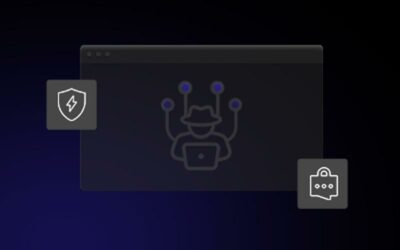With every technological advance comes a new threat to our security; every new gadget we bring into our lives poses a new risk that must be combated.
The new decade is set to usher in a whole new array of wonderful advances which will improve our lives; the Internet of Things (IoT), 5G, cloud, and biotech will be at the forefront of those developments but also pose new cyber threats. Those threats are not even necessarily from hackers as new technology brings all manner of openings and opportunities for bugs in the system, as we are about to examine.
THE INTERNET OF THINGS
The IoT is evolving all the time, with an increasing number of objects able to talk to each other. As it continues to develop, it will create a complex network that poses a cybersecurity risk. Why? Because it will only be as strong as its weakest link.
In a chain of objects talking to each other all the time, there will be a continuous threat unique to the IoT environment. Unwanted infiltration could come at any link in the chain and poses huge detection and eradication problems for those tasked with preventing such intrusions.
TINKERING
The global smart home market is believed to be capable of reaching a value of more than $53 billion by 2022, making it a lucrative growth market. However, home automation and smart technology present a problem not from hackers or criminals, but from end-users the tech is meant to help.
An individual’s ability to tinker with a product is likely to be a threat to cybersecurity in a very physical way. Think of it this way: a consumer purchases an autopilot system for their car and changes some settings for their own preferences, then causes a crash. Who is to blame in the aftermath, the company tasked with controlling the car, or the end-user?
Whilst not a traditional cyber risk, the new wave of technology does present companies with threats from the very people they’re hoping to help.
BIOMETRICS
Biometrics is a cyber solution that should help bolster security over the next decade, but the technology must be solid if it is to be implemented effectively. When it comes to touch sensors such as fingerprint readers, the design is crucial.
A variety of PCB design services are often required to help companies reach hardware solutions that will accurately capture the required biometric information. The intricacy of such hardware, and the ability to integrate with software, poses problems to companies producing the technology.
The combination of hardware and software is critical to biometrics becoming an accepted form of cybersecurity; hardware must be reliable when it comes to collecting data such as fingerprints, with software capable of storing and processing the huge amount of data being presented.
5G
5G technology will allow us to do so much more with mobile devices than we can at present. It will allow for increased connectivity and a larger number of devices, in turn facilitating more capable IoT devices and much more.
Of course, this will create a boom for technological innovation, but in terms of cybersecurity, it also produces an opportunity for malevolent activity. All the aspects that we see as beneficial with 5G technology present significant risks to cybersecurity.
With so many risks to companies and individuals, it might be worrying just how much money should be invested in IT. You might be interested in our article to help guide you through the finer points of IT budgeting.




